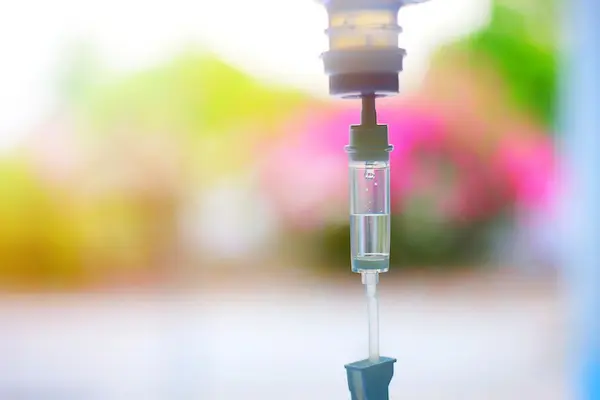
Maintenance chemotherapy is a mesothelioma treatment meant to sustain prior therapy’s effects. It is generally less aggressive than previously administered treatment methods. Its purpose is to slow the advance of mesothelioma cancer. Put another way, it is meant to maintain, for a period of time, the quality of life patients achieve at the end of their initial treatment.
How Does Maintenance Chemotherapy Help Cancer Patients?
Maintenance chemotherapy tries to balance disease control and quality of life benefits. These goals are different from the goals of first-line treatment.
Initial cancer treatments are usually aggressive attacks meant to shrink and control cancer. These heavy-hitting drugs can be useful in getting the disease under control. But they may result in various side effects. After a while, the benefits of aggressive treatment may no longer outweigh its side effects for the patient. At this point, the goals of treatment can change. Therapy can focus on maintaining the patient’s results while also limiting side effects.
Maintenance chemotherapy usually involves less aggressive drugs than those used during initial treatment. The goal is to both maintain disease control and improve quality of life.
Maintenance chemotherapy is an alternative to supportive care. Many mesothelioma patients receive supportive care after initial treatment. It may include:
- Exercise
- Meditation
- Nutritional support
- Pain management
- Palliative care
Maintenance therapy may be able to provide benefits that supportive care cannot.
Types of Maintenance Chemotherapy
Doctors classify maintenance chemotherapy in one of two ways: continuation or switch. The differences between the two types of maintenance chemotherapy are as follows:
- Continuation-maintenance chemotherapy: This involves continued use of the chemotherapy drug(s) used during initial treatment. It may differ from initial treatment by using smaller doses. It may also only use one or two drugs from the initial line of treatment. These changes help limit side effects.
- Switch-maintenance chemotherapy: This involves changing the chemotherapy drug(s) used during initial treatment. The new drug has a different cancer-killing mechanism than those previously used.
Researchers are continuing to investigate both types. Future studies may reveal the benefits of one versus the other to treat different cancers. A doctor can determine which type of maintenance chemotherapy is appropriate for a patient.
Types of Chemotherapy Drugs Used in Mesothelioma Maintenance Therapy
The use of maintenance chemotherapy to treat mesothelioma is an ongoing area of study. Researchers have studied possible benefits using specific chemotherapy drugs. Future research may look at using other chemotherapy drugs for mesothelioma maintenance treatment. These may show beneficial results.
One study looked at the use of pemetrexed for pleural mesothelioma maintenance therapy. It concluded that physicians should not use pemetrexed alone for maintenance therapy. The study did not look into possible combination maintenance therapies using pemetrexed. This could be an area for future research.
Another study examined the use of gemcitabine in pleural mesothelioma switch-maintenance therapy. Patients received an initial treatment of platinum and pemetrexed. Among study patients, median progression-free survival was:
- For patients receiving gemcitabine: 6.2 months
- For patients receiving supportive care alone: 3.2 months
These results are promising. Extending progression-free survival may improve quality of life. This is one of the goals of maintenance chemotherapy.
Other chemotherapy drugs may also be useful as maintenance therapies for mesothelioma. Future research can examine different maintenance chemotherapies. It can also examine the use of other types of therapies, such as hormonal therapy and immunotherapy. These may be useful either alone or in combination with chemotherapy drugs.
Maintenance Chemotherapy Side Effects
Maintenance chemotherapy seeks to limit side effects while maintaining quality of life. However, side effects are still possible. They will depend on the kind of drug used for maintenance. Patients can find possible side effects listed on the label of the drug.
Maintenance Chemotherapy Questions
-
What is maintenance chemotherapy?
- Maintenance chemotherapy is a cancer treatment intended to sustain the effects of prior therapy. It often uses a gentler chemotherapy drug than initial treatment. This helps achieve its goals of sustaining quality of life and controlling tumor growth.
-
Is maintenance chemotherapy right for me?
- Maintenance chemotherapy may be a beneficial alternative to supportive therapy for mesothelioma patients. Any patient interested in maintenance chemotherapy should discuss it with a physician. A mesothelioma doctor can help the patient decide if maintenance chemotherapy is right for them.
-
How long does maintenance chemotherapy last?
- Maintenance chemotherapy duration may last from months to years. At least one lung cancer patient has received three or more years of maintenance therapy. An oncologist can help patients understand what to expect from this treatment.




